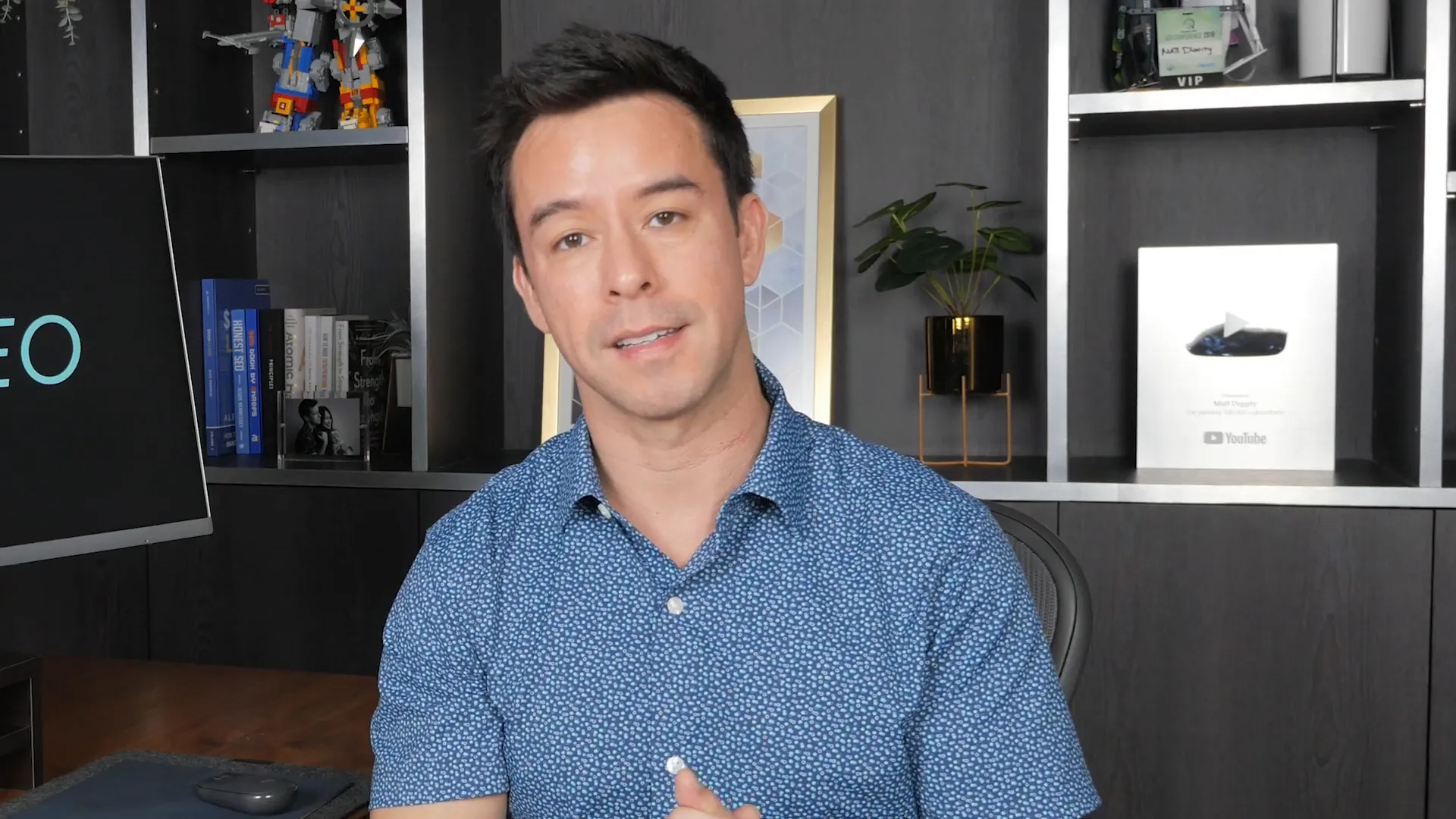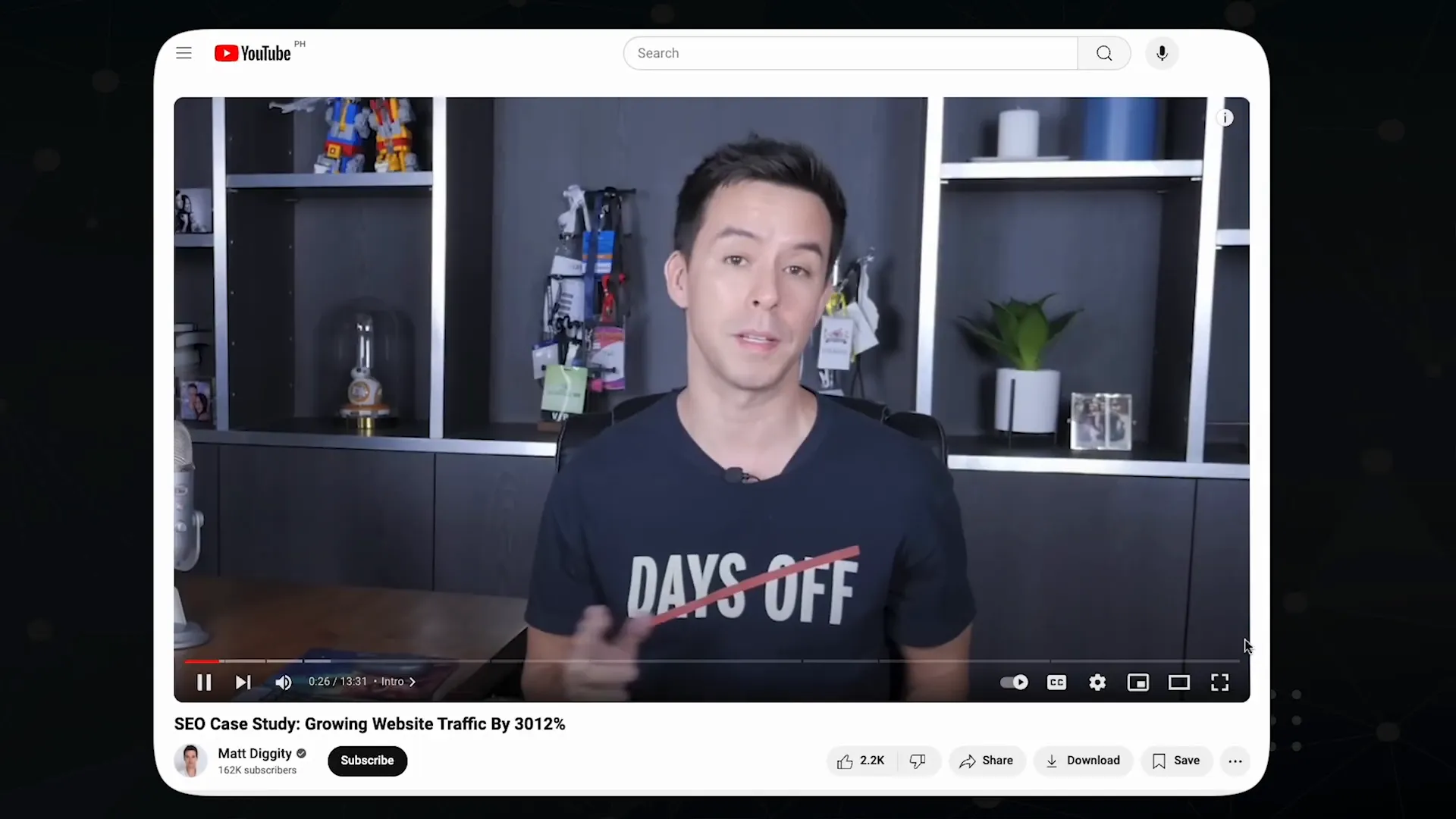In today’s digital landscape, the phrase ‘Google SEO is DEAD’ resonates more than ever. As algorithm updates and intense competition make organic search increasingly challenging, many are turning to YouTube as a viable alternative for generating traffic and income. This blog explores the benefits and drawbacks of both platforms to determine the best path forward.
Table of Contents
- ? The Decline of Google SEO
- ? The Rise of YouTube: A New Opportunity
- ? The Cons of YouTube: What to Consider
- ? Comparing Income Potential: Google vs. YouTube
- ? The Future of Content Creation: A Dual Approach
? The Decline of Google SEO
Google SEO has been the cornerstone of digital marketing for years. Yet, the landscape is shifting dramatically. The phrase “Google SEO is DEAD” isn’t just clickbait; it’s a reality for many pure content websites. Algorithm updates are relentless, causing severe fluctuations in traffic. One day, your site is thriving, and the next, it’s buried under a heap of search results.
Take, for example, Google’s September 2023 helpful content update. It was a seismic event, shaking up the Internet and hitting small to medium-sized blogs the hardest. Websites with massive backlink profiles like Reddit and Quora have become Google’s favorites, leaving smaller sites in the dust. The search engine giant’s traffic distribution feels less like an algorithm and more like a game of favorites.

Adding insult to injury, Google’s Search Generated Experience (SGE) is siphoning off traffic by providing AI-generated answers right at the top of search results. This isn’t just a minor inconvenience; it’s a direct challenge to the ownership of your content. Google’s AI learns from your site, then repackages that knowledge, offering it up as its own. It’s like lending your notes to a friend, only for them to get the credit.
The younger generation’s shift toward social media for search is another nail in the coffin. Platforms like TikTok, Instagram, and particularly YouTube are becoming the go-to sources for information. The shift is clear: people want engaging, visual content, and Google SEO simply isn’t delivering that.
Why “Google SEO is DEAD” Isn’t an Exaggeration
The decline isn’t just about algorithm changes or AI encroachment. It’s about the fundamental shift in how users consume content. Websites that once thrived on SEO are now facing a perfect storm of challenges: AI stealing their thunder, shrinking organic reach, and users migrating to more interactive platforms.
Even the search results page is evolving to favor paid content, pushing organic results further down. This shift is particularly devastating for content creators who rely solely on organic traffic for revenue. With more ads and AI-generated snippets, the space for organic listings is shrinking, making it increasingly difficult to sustain traffic levels.
? The Rise of YouTube: A New Opportunity
While Google SEO faces a downturn, YouTube emerges as a promising frontier. Its growth trajectory is impressive, with user numbers expected to surpass 1.1 billion in the next three years. The platform offers a unique blend of engagement and reach, unmatched by traditional SEO.
YouTube’s algorithm, although simple, is powerful. It prioritizes viewer engagement and retention, rewarding content that captures and holds attention. This focus on quality over optimization is a breath of fresh air for creators tired of chasing Google’s ever-changing metrics.

The platform’s potential for building a dedicated audience is immense. Unlike traditional SEO, where traffic can be volatile, YouTube offers creators a more stable and predictable path to growth. By consistently delivering quality content, you can cultivate a loyal audience that eagerly anticipates your next video.
Unmatched Engagement and Conversion Rates
Engagement on YouTube isn’t just a buzzword; it’s a tangible advantage. Video content allows for a deeper connection with your audience, fostering trust and authenticity. This translates into higher conversion rates, as viewers are more likely to engage with content delivered by a familiar face.
Consider the numbers: a blog post might attract 1,100 users, leading to 110 leads with a typical conversion rate. A YouTube video on the same topic, however, can garner 71,000 views, resulting in 1,491 leads. The difference is staggering, showcasing the platform’s potential to drive significant business outcomes.
YouTube not only helps in building an audience but also offers monetization opportunities. From affiliate commissions to AdSense revenue, the platform provides multiple streams of income, making it a lucrative option for content creators.

? The Cons of YouTube: What to Consider
While YouTube presents a wealth of opportunities, it also comes with its own set of challenges. It’s important to weigh these factors carefully before diving headfirst into video content creation.
Lower Search Volume
Compared to Google, YouTube often has lower search volumes for the same keywords. For instance, a keyword like “best VPN for Netflix” might see only 30 global searches per month on YouTube, whereas Google could see 5,800 searches. This discrepancy can impact the potential reach of your content.
Moreover, some queries are more suited for quick, text-based answers. For example, if someone wants to quickly know if Lisa from Blackpink has a boyfriend, reading a short article might be more appealing than watching a lengthy video. This highlights the continued relevance of text-based searches for specific types of information.
Complexity and Scalability
Building and scaling a YouTube channel is no easy feat. The process involves several intricate steps—from topic research to scripting, filming, and editing. Each of these stages requires a higher skill level compared to traditional website content creation.

While you can churn out multiple blog posts in a day, producing a single high-quality video can take weeks. This makes scaling a YouTube channel significantly more resource-intensive. Additionally, if you’re the face of the channel, you’re tied to it, which complicates scaling efforts.
Ownership and Control
One of the most significant drawbacks is the lack of ownership. YouTube channels are ultimately controlled by Google, meaning your channel could be at risk of being taken down for policy violations or copyright infringements. This lack of control can be a major concern for creators who have invested significant time and resources into their channels.
Furthermore, while you can attempt to move your audience to platforms where you have more control, such as email lists, doing so might negatively impact your channel’s performance due to YouTube’s algorithm prioritizing time spent on the platform.
? Comparing Income Potential: Google vs. YouTube
When it comes to income potential, both Google and YouTube offer lucrative opportunities, but they cater to different strategies and business models.
Website Monetization
Websites powered by Google SEO can generate substantial income. Many websites consistently make over $50,000 per month, and these sites can be sold for 35 times their monthly profit, potentially fetching millions. This makes SEO-driven websites a powerful asset for long-term financial growth.
Moreover, websites offer flexibility in monetization strategies, from affiliate marketing to direct ad sales and product offerings. The tangible nature of a website also makes it easier to sell and transfer ownership compared to a YouTube channel.
YouTube’s Financial Upside
On the other hand, YouTube offers a dynamic platform for earning through AdSense, affiliate marketing, and sponsorships. Creators can quickly build an audience and monetize through various means, often with less upfront cost than starting a full-scale website.
However, while YouTube channels can generate significant revenue, they tend to sell for less than equivalent websites due to the personal brand association and platform ownership concerns. This can limit the exit strategy for creators looking to move on from their channels.
? The Future of Content Creation: A Dual Approach
As the digital landscape continues to evolve, a dual approach leveraging both YouTube and Google SEO may be the key to sustainable success.
Integrating Video and SEO
Combining the strengths of both platforms allows creators to maximize their reach and revenue. While SEO can drive traffic to a website, embedding YouTube videos can enhance engagement and provide a richer user experience.
This integrated strategy also prepares content creators for the future, where consumers increasingly expect diverse and interactive content formats.
Adaptation and Growth
Adapting to changes in consumer behavior and platform algorithms is crucial. By embracing both YouTube and traditional SEO, creators can remain agile and responsive to industry trends, ensuring long-term success.
In conclusion, while the phrase “Google SEO is DEAD” captures the shifting dynamics in digital marketing, the reality is more nuanced. Embracing both platforms allows creators to capitalize on their unique advantages, ensuring they are well-positioned for future growth.
If you’re interested in boosting your online presence even further, don’t miss our Wealthy Affiliate Review.

